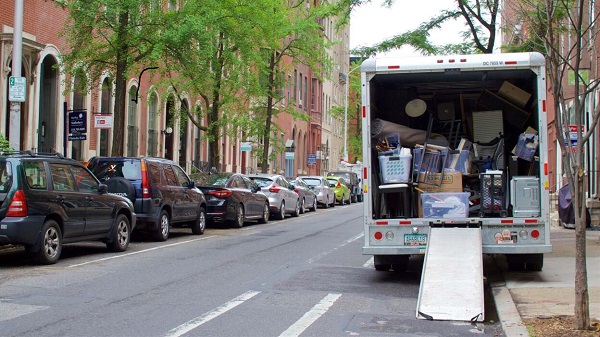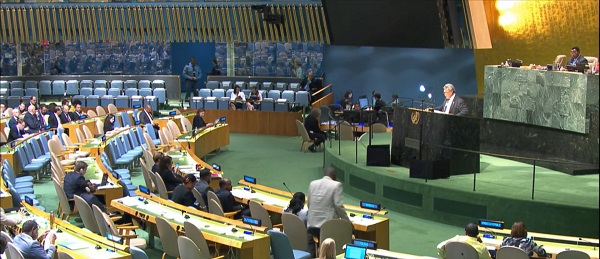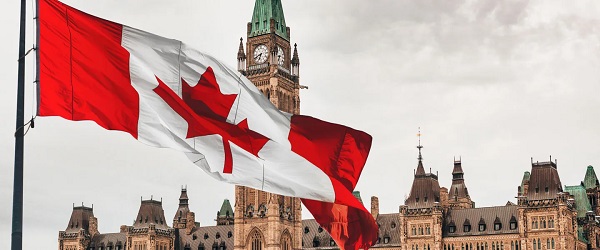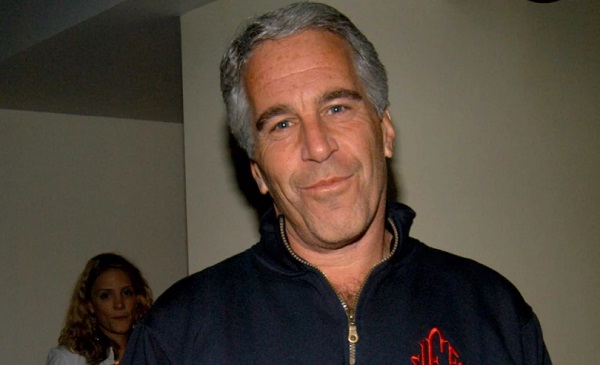Economy
One Solution to Canada’s Housing Crisis: Move. Toronto loses nearly half million people to more affordable locations

From the Frontier Centre for Public Policy
By Wendell Cox
The largest CMA, Toronto, had by far the most significant net internal migration loss at 402,600, Montreal lost 162,700, and Vancouver lost 49,700.
Canadians are fleeing overpriced cities to find more affordable housing. And restrictive urban planning policies are to blame.
Canadians may be solving the housing crisis on their own by moving away from more expensive areas to areas where housing is much more affordable. This trend is highlighted in the latest internal migration data from Statistics Canada.
The data covers 167 areas comprising the entire nation, including Census Metropolitan Areas (CMAs), which have populations from 100,000 to seven million. It also includes the smaller Census Agglomerations (CAs), which have a core population of at least 10,000, as well as areas outside CMAs and CAs in each province and territory, which are referred to as “largely rural areas.”
Long-standing migration trends have been virtually reversed. Larger cities (CMAs) now see the highest loss of net internal migrants, while smaller cities (CAs) are experiencing solid gains. Between 2019 and 2023, Canada’s CMAs lost 273,800 net internal migrants to smaller areas, including CAs and largely rural areas. This contrasts sharply with the previous five-year period (2014 to 2018) when CMAs saw only a 1,000-person loss.
So, where did these people go? A significant portion – 108,100 – moved to CAs, which captured 39 per cent of the CMA losses. This is triple that of the previous five years (2014 through 2018).
However, the most notable shift occurred in largely rural areas, which gained 165,700 net internal migrants, representing 61 per cent of CMA losses. This is a dramatic increase compared to the 33,700 net loss in the previous five years.
Among the 167 areas, the migration data is stunning.
The areas experiencing the greatest net internal migration are outside CMAs and CAs. The largely rural area of Ontario saw the biggest gain, with a net increase of 78,300 people – nearly 40 times the number from the previous five years. Meanwhile, rural Quebec placed second, with a net gain of 76,200 people, more than 10 times the increase in the prior five years. The Calgary CMA ranked third (and first among CMAs) at 42,600, followed by the Ottawa Gatineau CMA (Ontario and Quebec) at 36,700 and the Oshawa CMA at 34,900.
The largest CMA, Toronto, had by far the most significant net internal migration loss at 402,600, Montreal lost 162,700, and Vancouver lost 49,700. Outside these CMAs, nearly all areas posted net gains.
People have also started moving to the Maritimes. The Halifax CMA tripled its previous gain (21,300). In New Brunswick, Moncton nearly quadrupled its gain (7,000). Modest gains were also made in Fredericton and Saint John as well as in Charlottetown in Prince Edward Island.
Meanwhile, housing affordability in Canada’s largest CMAs has become grim. Toronto’s median house price to median household income has doubled in less than two decades. Vancouver’s prices have tripled relative to incomes in five decades. Montreal’s house prices nearly doubled relative to incomes over two decades.
These CMAs (and others) have housing policies typical of the international planning orthodoxy, which seeks to make cities denser. In effect, they have declared war against “urban sprawl,” trying to stop any material expansion of urbanization. These urban containment policies, which include greenbelts, agricultural reserves, urban growth boundaries and compact city strategies, are associated with the worst housing affordability. Land prices are skewed upward throughout the market. Demand continues to increase ahead of incomes, but the supply of low-cost suburban land, so crucial to controlling costs, is frozen.
Regrettably, some areas where people have fled are also subject to urban containment and housing affordability has deteriorated rapidly. Between 2015 and 2022, prices in Ontario CMAs London, Guelph, Brantford and St. Catharines have about doubled. BC’s Fraser Valley and Vancouver Island have seen similar increases. Those moving to these areas are ahead financially, but the rapidly rising house prices are closing opportunities.
There are proposals to restore housing affordability, though none tackle the urban containment policies associated with the price increases. Indeed, we have not found a single metropolitan area where housing affordability has been restored with the market distortions of the intensity that have developed in Toronto, Vancouver and Montreal (not in our Demographia International Housing Affordability report or elsewhere). Such markets have become unsustainable for most new entrant households because they cannot afford to live there.
Housing is not a commodity. Households have varying preferences, from ground-oriented housing (detached and townhomes) to high-rise condos. Indeed, a growing body of literature associates detached housing with higher total fertility rates. According to Statistics Canada, Canadians have favoured lower densities for decades, a trend that continued through the 2021 Census, a trend that continued through the 2021 Census, according to Statistics Canada.
With governments (virtually around the world) failing to maintain stable and affordable housing markets, it’s not surprising people are taking matters into their own hands. Until fundamental reforms can be implemented in the most expensive markets, those seeking a better quality of life will have no choice but to leave.
First published in the Financial Post.
Wendell Cox is a senior fellow at the Frontier Centre for Public Policy and the author of Demographia International Housing Affordability.
Business
Trump confirms 35% tariff on Canada, warns more could come

Quick Hit:
President Trump on Thursday confirmed a sweeping new 35% tariff on Canadian imports starting August 1, citing Canada’s failure to curb fentanyl trafficking and retaliatory trade actions.
Key Details:
- In a letter to Canadian Prime Minister Mark Carney, Trump said the new 35% levy is in response to Canada’s “financial retaliation” and its inability to stop fentanyl from reaching the U.S.
- Trump emphasized that Canadian businesses that relocate manufacturing to the U.S. will be exempt and promised expedited approvals for such moves.
- The administration has already notified 23 countries of impending tariffs following the expiration of a 90-day negotiation window under Trump’s “Liberation Day” trade policy.
Diving Deeper:
President Trump escalated his tariff strategy on Thursday, formally announcing a 35% duty on all Canadian imports effective August 1. The move follows what Trump described as a breakdown in trade cooperation and a failure by Canada to address its role in the U.S. fentanyl crisis.
“It is a Great Honor for me to send you this letter in that it demonstrates the strength and commitment of our Trading Relationship,” Trump wrote to Prime Minister Mark Carney. He added that the tariff response comes after Canada “financially retaliated” against the U.S. rather than working to resolve the flow of fentanyl across the northern border.
Trump’s letter made clear the tariff will apply broadly, separate from any existing sector-specific levies, and included a warning that “goods transshipped to evade this higher Tariff will be subject to that higher Tariff.” The president also hinted that further retaliation from Canada could push rates even higher.
However, Trump left the door open for possible revisions. “If Canada works with me to stop the flow of Fentanyl, we will, perhaps, consider an adjustment to this letter,” he said, adding that tariffs “may be modified, upward or downward, depending on our relationship.”
Canadian companies that move operations to the U.S. would be exempt, Trump said, noting his administration “will do everything possible to get approvals quickly, professionally, and routinely — In other words, in a matter of weeks.”
The U.S. traded over $762 billion in goods with Canada in 2024, with a trade deficit of $63.3 billion, a figure Trump called a “major threat” to both the economy and national security.
Speaking with NBC News on Thursday, Trump suggested even broader tariff hikes are coming, floating the idea of a 15% or 20% blanket rate on all imports. “We’re just going to say all of the remaining countries are going to pay,” he told Meet the Press moderator Kristen Welker, adding that “the tariffs have been very well-received” and noting that the stock market had hit new highs that day.
The Canadian announcement is part of a broader global tariff rollout. In recent days, Trump has notified at least 23 countries of new levies and revealed a separate 50% tariff on copper imports.
“Not everybody has to get a letter,” Trump said when asked if other leaders would be formally notified. “You know that. We’re just setting our tariffs.”
Business
UN’s ‘Plastics Treaty’ Sports A Junk Science Wrapper


From the Daily Caller News Foundation
By Craig Rucker
According to a study in Science Advances, over 90% of ocean plastic comes from just 10 rivers, eight of which are in Asia. The United States, by contrast, contributes less than 1%. Yet Pew treats all nations as equally responsible, promoting one-size-fits-all policies that fail to address the real source of the issue.
Just as people were beginning to breathe a sigh of relief thanks to the Trump administration’s rollback of onerous climate policies, the United Nations is set to finalize a legally binding Global Plastics Treaty by the end of the year that will impose new regulations, and, ultimately higher costs, on one of the world’s most widely used products.
Plastics – derived from petroleum – are found in everything from water bottles, tea bags, and food packaging to syringes, IV tubes, prosthetics, and underground water pipes. In justifying the goal of its treaty to regulate “the entire life cycle of plastic – from upstream production to downstream waste,” the U.N. has put a bull’s eye on plastic waste. “An estimated 18 to 20 percent of global plastic waste ends up in the ocean,” the UN says.
As delegates from over 170 countries prepare for the final round of negotiations in Geneva next month, debate is intensifying over the future of plastic production, regulation, and innovation. With proposals ranging from sweeping bans on single-use plastics to caps on virgin plastic output, policymakers are increasingly citing the 2020 Pew Charitable Trusts report, Breaking the Plastic Wave, as one of the primary justifications.
But many of the dire warnings made in this report, if scrutinized, ring as hollow as an empty PET soda bottle. Indeed, a closer look reveals Pew’s report is less a roadmap to progress than a glossy piece of junk science propaganda—built on false assumptions and misguided solutions.
Pew’s core claim is dire: without urgent global action, plastic entering the oceans will triple by 2040. But this alarmist forecast glosses over a fundamental fact—plastic pollution is not a global problem in equal measure. According to a study in Science Advances, over 90% of ocean plastic comes from just 10 rivers, eight of which are in Asia. The United States, by contrast, contributes less than 1%. Yet Pew treats all nations as equally responsible, promoting one-size-fits-all policies that fail to address the real source of the issue.
This blind spot has serious consequences. Pew’s solutions—cutting plastic production, phasing out single-use items, and implementing rigid global regulations—miss the mark entirely. Banning straws in the U.S. or taxing packaging in Europe won’t stop waste from being dumped into rivers in countries with little or no waste infrastructure. Policies targeting Western consumption don’t solve the problem—they simply shift it or, worse, stifle useful innovation.
The real tragedy isn’t plastic itself, but the mismanagement of plastic waste—and the regulatory stranglehold that blocks better solutions. In many countries, recycling is a government-run monopoly with little incentive to innovate. Meanwhile, private-sector entrepreneurs working on advanced recycling, biodegradable materials, and AI-powered sorting systems face burdensome red tape and market distortion.
Pew pays lip service to innovation but ultimately favors centralized planning and control. That’s a mistake. Time and again, it’s been technology—not top-down mandates—that has delivered environmental breakthroughs.
What the world needs is not another top-down, bureaucratic report like Pew’s, but an open dialogue among experts, entrepreneurs, and the public where new ideas can flourish. Imagine small-scale pyrolysis units that convert waste into fuel in remote villages, or decentralized recycling centers that empower informal waste collectors. These ideas are already in development—but they’re being sidelined by policymakers fixated on bans and quotas.
Worse still, efforts to demonize plastic often ignore its benefits. Plastic is lightweight, durable, and often more environmentally efficient than alternatives like glass or aluminum. The problem isn’t the material—it’s how it has been managed after its use. That’s a “systems” failure, not a material flaw.
Breaking the Plastic Wave champions a top-down, bureaucratic vision that limits choice, discourages private innovation, and rewards entrenched interests under the guise of environmentalism. Many of the groups calling for bans are also lobbying for subsidies and regulatory frameworks that benefit their own agendas—while pushing out disruptive newcomers.
With the UN expected to finalize the treaty by early 2026, nations will have to face the question of ratification. Even if the Trump White House refuses to sign the treaty – which is likely – ordinary Americans could still feel the sting of this ill-advised scheme. Manufacturers of life-saving plastic medical devices, for example, are part of a network of global suppliers. Companies located in countries that ratify the treaty will have no choice but to pass the higher costs along, and Americans will not be spared.
Ultimately, the marketplace of ideas—not the offices of policy NGOs—will deliver the solutions we need. It’s time to break the wave of junk science—not ride it.
Craig Rucker is president of the Committee For A Constructive Tomorrow (www.CFACT.org).
-

 Also Interesting2 days ago
Also Interesting2 days ago9 Things You Should Know About PK/PD in Drug Research
-

 Business2 days ago
Business2 days ago‘Experts’ Warned Free Markets Would Ruin Argentina — Looks Like They Were Dead Wrong
-

 Bruce Dowbiggin2 days ago
Bruce Dowbiggin2 days agoThe Covid 19 Disaster: When Do We Get The Apologies?
-

 Business2 days ago
Business2 days agoCannabis Legalization Is Starting to Look Like a Really Dumb Idea
-

 Media2 days ago
Media2 days agoCBC journalist quits, accuses outlet of anti-Conservative bias and censorship
-

 Business2 days ago
Business2 days agoCarney government should recognize that private sector drives Canada’s economy
-

 Alberta1 day ago
Alberta1 day agoFourteen regional advisory councils will shape health care planning and delivery in Alberta
-

 Automotive2 days ago
Automotive2 days agoAmerica’s EV Industry Must Now Compete On A Level Playing Field




